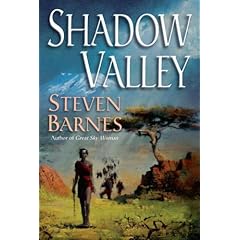“An unbelieved truth can hurt a man much more than a lie. It takes great courage to back truth unacceptable to our times. There's a punishment for it, and it's usually crucifixion.”
― John Steinbeck, East of Eden
“Truth without love is brutality, and love without truth is hypocrisy.”
― Warren W. Wiersbe
“Silence becomes cowardice when occasion demands speaking out the whole truth and acting accordingly.”
― Mahatma Gandhi
“Never be afraid to raise your voice for honesty and truth and compassion against injustice and lying and greed. If people all over the world...would do this, it would change the earth.”
― William Faulkner
It is probably safe to say that there are probably as many definitions of “art” as there are artists. One answer that makes intense sense of the arguments and perspectives is that “Art is Self expression.” Note the capital “S” there, meaning “true Self” or to put it another way, “Art is expression of truth.”
“Craft” is another thing, of course, chiefly skill in communication, related to style, technique, structure, and so forth. Deep subject, complementary to but separate from the first.
There was recently a Facebook discussion that suggested that the purpose of art is to confront, upset, destroy the status quo, and so forth. Consider the possibility that these things are NOT the purpose—they are the effect. Human beings slide into a “dreaming” state rather rapidly, a place rife with mythologies and justifications. Any real truth—about relationships, politics, spirituality, actions, or whatever, will conflict with much of these illusions, and be uncomfortable to those comforted thereby.
An artist, from this perspective, has the obligation to have not only craft (to express) but a point of view (something worth expressing—a perspective on “truth” the artist is willing to defend or express during his career.)
Because it will require fantastic energy and focus to dig deep enough to find a truth worth sharing, it is valuable to focus on something that is deeply meaningful to you: a pain, hope, dream, fear, love…something that engages the passions so strongly that you won’t stop with the easy answers, but keep digging, and digging, throwing away the “easy” answers your mind and ego will frantically throw at you to distract you from reality, drag you back down into the dream.
Another trap the Seeker encounters is external reward. Ooooh! Shiny! When you’ve spent your life trying to get people to look at something (whether it is something about us, or something about the world) when you start getting fame, money, sex, or adulation because of some perception you’ve offered to the world, it is tempting to offer some version of that same perception again…and again…and again…until you’ve forgotten the process that led you to that awareness in the first place, and have lost your way.
In the arts, this might be writing book after book about the same situation, or set in the same universe, or exploring the superficial aspects of some theme. Hell, you have to pay the bills, right?
And of course it’s true, you do, especially if you have a family. It might be wise to question the values of any artist who places his ego need to create or seek “truth” above the legitimate need of a child for food and shelter and security.
Navigating these waters is difficult, but necessary because we are ALL artists in one way or another, and our primary work of art is the lives we live. The artistic works, careers, physical bodies, and relationships are just external expressions of the lives we live from day to day, our day to day actions are the result of our beliefs, values, and emotional charges, and these things are the result of our relationship to Truth—whatever actually “is” and the degree to which we are in alignment with it.
Milton Erickson achieved miracles with his clients because he believed that, no matter what people said, what they really wanted were simple things in alignment with basic human nature: safety, security, sensual comfort, maturity, love, connection, success, health, a thriving family, self-possession, and graceful aging. It is reasonable to suspect that he regarded any denial of these things as lies the client told him, until proven otherwise.
“I don’t want a relationship.”
“I’m satisfied with my body as it is.”
“I don’t want money”
“I’m not afraid of anything.”
It is reasonable to look at Erickson’s pattern, or the Chakras, or Maslow’s hierarchy of needs as normal, healthy, and typical, and divergences from them as extraordinary and potentially maladaptive.
That that is truth, and that the stories people tell about not wanting those things are mostly interesting lies.
And as we explore the lies we tell ourselves, the lies others tell become more obvious, and an entirely new level of human understanding opens.
But by the way…confronting people with what you see is the FASTEST way to destroy relationships, unless you have permission. There is nothing harder than finding companions genuinely committed to the truth. Trust me.
This search, the quest to learn “what is True” or “who am I” are universals. All human knowledge can be subsumed under one or the other category. And the further you get from the core questions, the more trivial the answers become, the more likely that these are mere entertainments, side-lines, distractions for children. Cotton candy. Nothing wrong with cotton candy, as long as you don’t mistake it for genuine nutrients.
Nothing wrong with lies, as long as you don’t mistake it for truth.
If you want to deepen your art, your life, your search for love or protection of the relationships you currently have with others or Self, simply ask “what is true” and “who am I?” and continue to ask until you run out of language and arrive at answers of deep elegance and calm simplicity. And then go deeper.
Dreams are sweet, but they burden us, and morph into nightmares without warning.
The Truth will set you free.
Namaste,
Steve
Wednesday, January 08, 2014
Art and Truth
Posted by
Steven Barnes
at
8:14 AM
![]()
Subscribe to:
Post Comments (Atom)







No comments:
Post a Comment